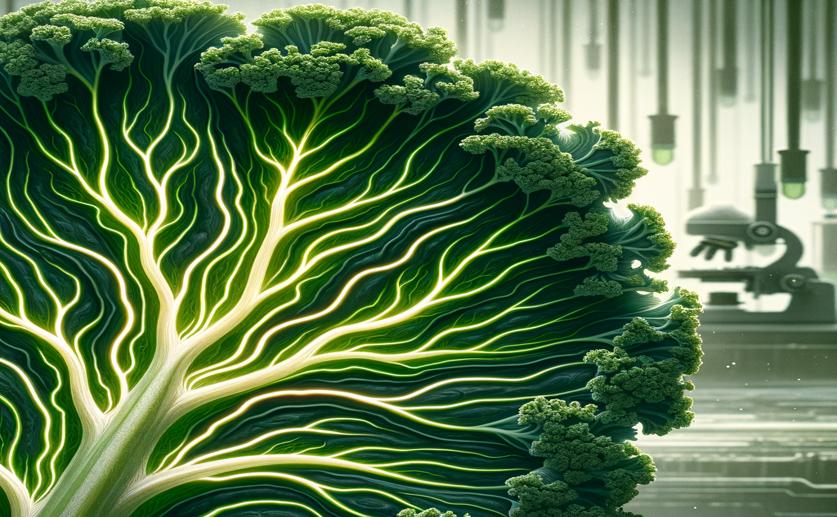
New Discovery Reveals How Kale Gets Its Color
Jim Crocker
13th June, 2024

Image Source: Natural Science News, 2024
Key Findings
- Researchers at Shenyang Agricultural University discovered a key gene, BoDFR1, that controls anthocyanin production in kale
- A variation in the BoDFR1 promoter affects its activity, leading to different levels of pink coloration in kale
- The study identified BoMYB4b as a repressor that reduces BoDFR1 expression, and BoMIEL1 as a protein that degrades BoMYB4b, promoting anthocyanin accumulation
References
Main Study
1) A novel three-layer module BoMYB1R1-BoMYB4b/BoMIEL1-BoDFR1 regulates anthocyanin accumulation in kale.
Published 12th June, 2024
https://doi.org/10.1111/tpj.16881
Related Studies
2) Apple RING E3 ligase MdMIEL1 inhibits anthocyanin accumulation by ubiquitinating and degrading MdMYB1 protein.
3) The E3 ubiquitin ligase SINA1 and the protein kinase BIN2 cooperatively regulate PHR1 in apple anthocyanin biosynthesis.
4) A conserved network of transcriptional activators and repressors regulates anthocyanin pigmentation in eudicots.



 9th June, 2024 | Greg Howard
9th June, 2024 | Greg Howard